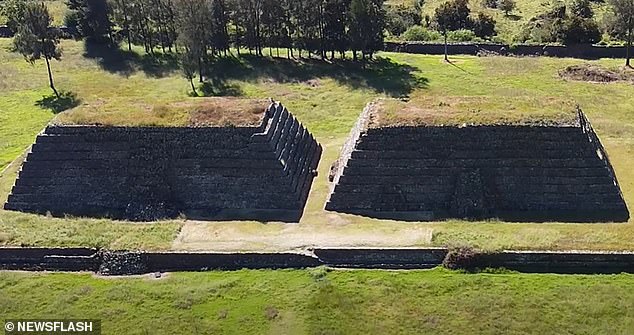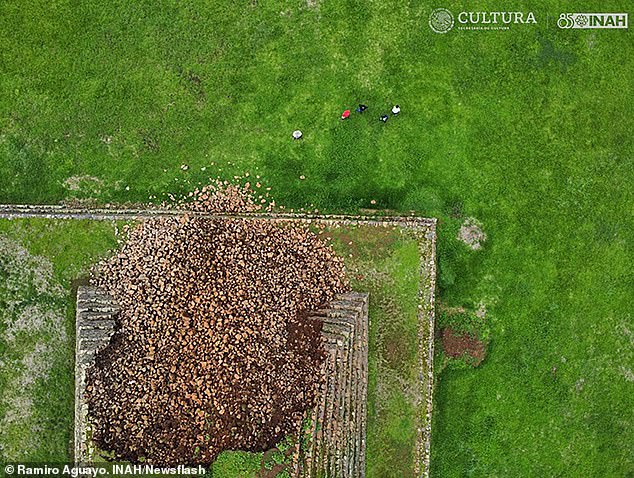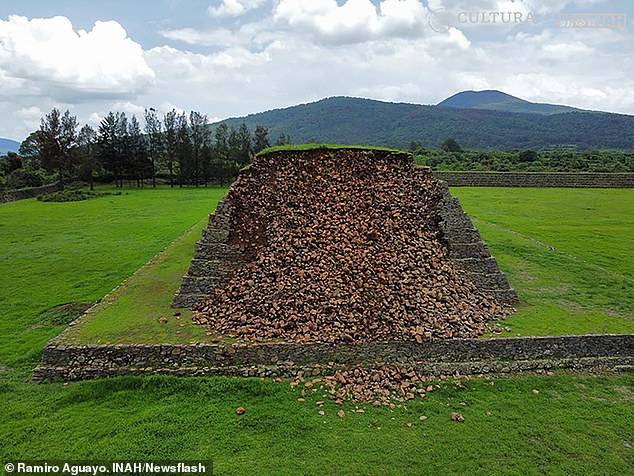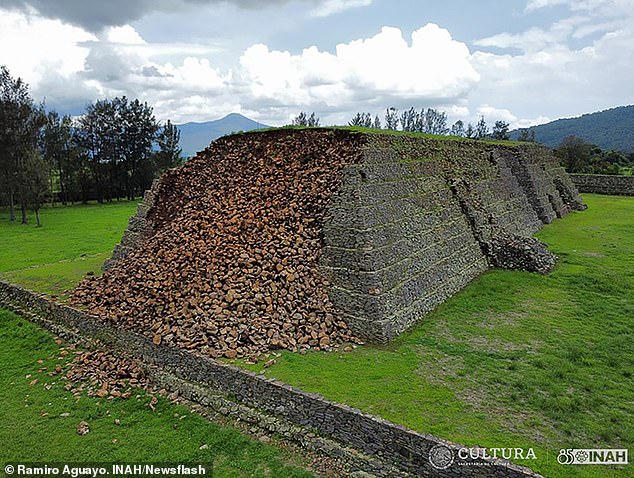The collapse of an ancient pyramid in Mexico has sparked fear among the local tribe who warned the destruction is a “bad omen”.
The 1,100-year-old brick pyramid, located in the Ihuatzio Archaeological Zone in the Mexican state of Michoacán, collapsed to one side due to heavy rains in the region.
The pyramids were built on the eastern shore of Lake Pátzcuaro, occupied by the Purépecha Empire from 900 AD until the Spanish conquistadors arrived in the region in 1530 AD.
Descendants of the ancient Purépecha tribe, which built the structure, said the storm could be a sign of an impending catastrophe, as a similar event occurred “because the gods were displeased.”
The pyramids collapsed on July 30, caused by increased rainfall, high temperatures and drought.

The 1,100-year-old pyramids were built by the ancestors of the Purépecha people and had been one of the tribe’s last archaeological sites in the area.
The pyramid collapsed in the early hours of July 30, following a storm that devastated the region.
Mexico’s National Institute of Anthropology and History (INAH) reported that heavy rains were recorded in the lake basin, with precipitation above the expected average.
‘A collapse occurred in the central part of the southern facade of one of the pyramidal foundations of the Ihuatzio Archaeological Zone,’ the INAH continued in a statement.
‘The high temperatures previously recorded in the area and the resulting drought caused cracks that favoured the filtration of water into the interior of the pre-Hispanic building.’
At least six of the pyramid’s steps on the slabs of the outer wall had been damaged. Images from the scene showed a cascade of bricks tumbling down the side and piled up near the structure.
Although the INAH claimed the collapse was due to natural causes, a member of the Purépecha tribe suggested something more sinister was at play.
‘For our ancestors, the builders, this was a bad omen indicating the proximity of an important event,’ said Tariakuiri Alvarez, a member of the tribe. wrote On Facebook.
‘Before the arrival of the conquistadors something similar happened, which for the Purépecha worldview of that time was due to the fact that the gods, Nana Kuerhaepiri and K’eri Kurikweri, were dissatisfied.’
The Ihuatzio area was considered the capital of the Purépecha people’s domain during the height of their occupation until the tribe’s reign came to an end in the early 16th century.

Cracks in the pyramids caused by the weather allowed rain to seep into the walls of the pyramids, causing both the interior and exterior to deteriorate over time.
At its peak, the site covered approximately 370 acres and housed at least 84 structures, seven of which are still on display in the archaeological park.
It also served as the staging ground for the defeat of the Aztec Empire by the Purépecha people in the 1470s, making the tribe one of the only indigenous groups in the region not to be conquered by the Aztecs.
For nearly 10 years, the Tzitzic King Pandacuare of the Purépecha Empire defended his tribe against Aztec attack as they attempted to dominate the entire region.
During the battle, his people are said to have killed over 20,000 Aztec soldiers, allowing the Purépecha to maintain their rule over western Mexico from the 14th to the early 16th century.

The structures served as a symbol of power and authority for the local tribe and were used for spiritual rituals and ceremonies.
Today, the Ihuatzio pyramids are considered one of the most important archaeological sites in the region.
The INAH said it has taken steps to protect and rebuild the pyramids, and said it has notified the Agroasemex Insurance Company, which covers any archaeological sites, to begin the process of obtaining funding.
“Damage assessment activities are continuing and are focused not only on recovering the damaged part, but also on fully repairing the structure of the building,” INAH said.
The decimated structures also follow the disintegration of a popular site in a Utah national park that suddenly collapsed due to erosion on Thursday.
Double Arch, also called Toilet Bowl and Crescent Pool, was formed from 190-million-year-old Navajo Sandstone that originated during the Late Triassic and Early Jurassic periods.
Since its formation, this fine-grained sand formation has been subject to scaling and erosion by weather, wind and rain.
The National Park Service said it is not yet aware of what caused the toilet to collapse and no injuries have been reported as a result.
DailyMail.com has contacted Mexico’s National Institute of Anthropology and History and the Purépecha tribe for comment.


